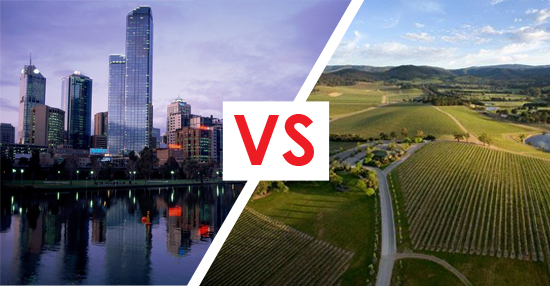Metro VS Regional
Cameron Fisher | 27th April, 2015

What’s the real difference?
On average, two in every three Australians currently live in capital cities across the country. In fact, 78% Western Australian residents live in the greater Perth area, giving the WA capital he highest proportion of population among each of the 8 major cities.
Over the next few decades the number of people that are choosing to live and work in our capital cities is expected to increase and has been increasing at a significant rate. Between 1973 and 2013 both Melbourne and Sydney increased their population by 61.9 percent and 54.5 percent respectively, although somewhat surprisingly Darwin experienced population growth of 190.5 percent over the same time period.
So we ask what’s the real difference between metro is and regional… the difference is population.
Although it may be obvious to some it’s important to understand how population generally effects the value of property. With a higher population there is more investment in infrastructure, more amenities, more jobs, better access to healthcare, schooling and other services and yes a higher proportion of wealth.
Related: Capital Markets Report 2015
More people equal more competition and competition for housing is what drives dwelling prices north.
When you have two (or more) people bidding for the same property, that competition is what will ultimately influence its value and when you have a larger population the likelihood of ripe competition for housing – particularly within well established, higher socio-economic demographics where a particular type of property is scarce – competition has the potential to greatly increase the value of property.
It’s a simple case of supply and demand… you have a product that more people are likely to want, and have the means to pay for prices go up.
If you follow the people, the people will follow the money!
(Source of facts: Australian Bureau of Statistics)
Trackbacks & Pingbacks
-
[…] Related: Metro VS Regional; Whats the real difference? […]





One Response to “Metro VS Regional”